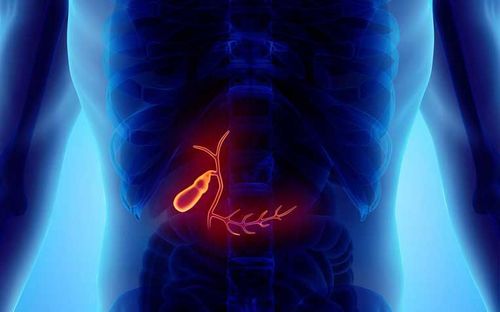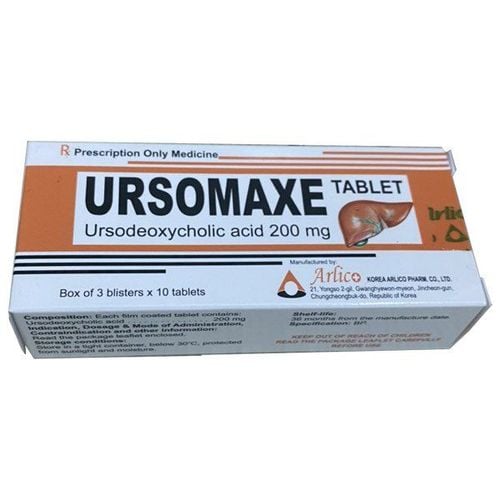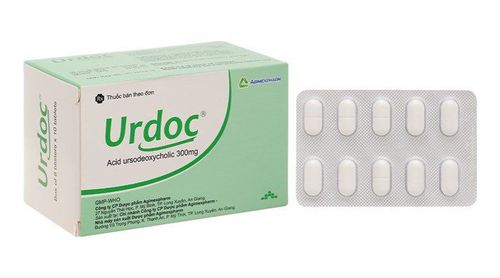This is an automatically translated article.
The article was professionally consulted by MSc Vu Van Quan - Department of General Surgery & Anesthesia - Vinmec Hai Phong International General Hospital.Laparoscopic cholecystectomy is the surgical treatment of acute cholecystitis. Patients should undergo cholecystectomy as early as possible, preferably within 72 hours of symptom onset.
1. Laparoscopic cholecystectomy in the treatment of acute cholecystitis
Cholecystectomy is currently commonly used in the treatment of acute cholecystitis. Early cholecystectomy should be performed within 72-96 hours of the first symptom onset due to advantages such as reduced risk of complications, reduced hospital stay and cost of treatment.
Many randomized controlled clinical trials and even pooled studies from various sources comparing laparoscopic cholecystectomy and open cholecystectomy in the treatment of acute cholecystitis have shown that , laparoscopic cholecystectomy is superior to open cholecystectomy.
2. Optimal surgical treatment for acute cholecystitis according to the degree of inflammation

Có những phương pháp nào điều trị viêm túi mật cấp?
The best treatment for acute cholecystitis is early cholecystectomy and consideration should be given to choosing an appropriate method for each degree of gallbladder inflammation:
Grade I (mild): Laparoscopic resection gallbladder is considered the most optimal method; Grade II (moderate): Surgery should be performed as soon as possible in experienced surgical facilities. However, for patients with severe localized cholecystitis, early gallbladder drainage (either surgically or percutaneously) should be performed. Early cholecystectomy can be difficult, so it is possible to treat the patient medically, followed by a delayed cholecystectomy; Grade III (severe): Actively treat organ dysfunction and local inflammation of the gallbladder with gallbladder drainage. Perform deferred cholecystectomy when indicated.
3. The best time for laparoscopic cholecystectomy
According to studies, patients who have early laparoscopic cholecystectomy show many advantages over delayed surgery. Accordingly, the patient's hospital stay is shorter, the pain is gone, the recovery is faster, and the cost is lower.
In recent years, laparoscopic cholecystectomy is increasingly widely applied in the treatment of acute cholecystitis. The benefit of performing early surgery has been documented in various studies in subjects with acute cholecystitis. Early surgery means that the patient has surgery within 72-96 hours of symptom onset.
After examining, assessing the patient's general condition, confirming the diagnosis of acute cholecystitis by ultrasound, computed tomography (CT) or magnetic resonance imaging of the hepatobiliary, at the time of surgery Surgery should be decided by experienced physicians. In general, patients should undergo laparoscopic cholecystectomy as soon as possible.
4. Complications to avoid in laparoscopic cholecystectomy

Phẫu thuật điều trị viêm túi mật cấp tính được xem là thành công khi bệnh nhân sau phẫu thuật khỏi hoàn toàn các triệu chứng
Complications of laparoscopic cholecystectomy have been reported in studies, including biliary tract injury, bleeding, liver and bowel injury, including those commonly seen with infusion open cholecystectomy. system, such as surgical site infection, intestinal obstruction, atelectasis, risk of deep vein thrombosis and urinary tract infection.
In which, biliary tract injury is considered a serious complication. Intestinal damage is a serious complication that needs to be avoided. In addition, there are injuries caused by limitations of laparoscopic surgery, such as narrow surgical field and non-tactile manipulation. Although there have been many improvements in techniques and equipment so far, as well as the improvement of surgeons' qualifications, the rate of biliary tract injury in laparoscopic cholecystectomy is still high compared to the surgical method. open gallbladder.
Overall, the mortality rate of cholecystectomy is less than 1%, but hepatobiliary tract surgeries are more commonly affected in the elderly. Accordingly, the rate of complications leading to death in this group is 5-10%. Surgical treatment of acute cholecystitis is considered successful when the patient is completely cured of symptoms after surgery.














